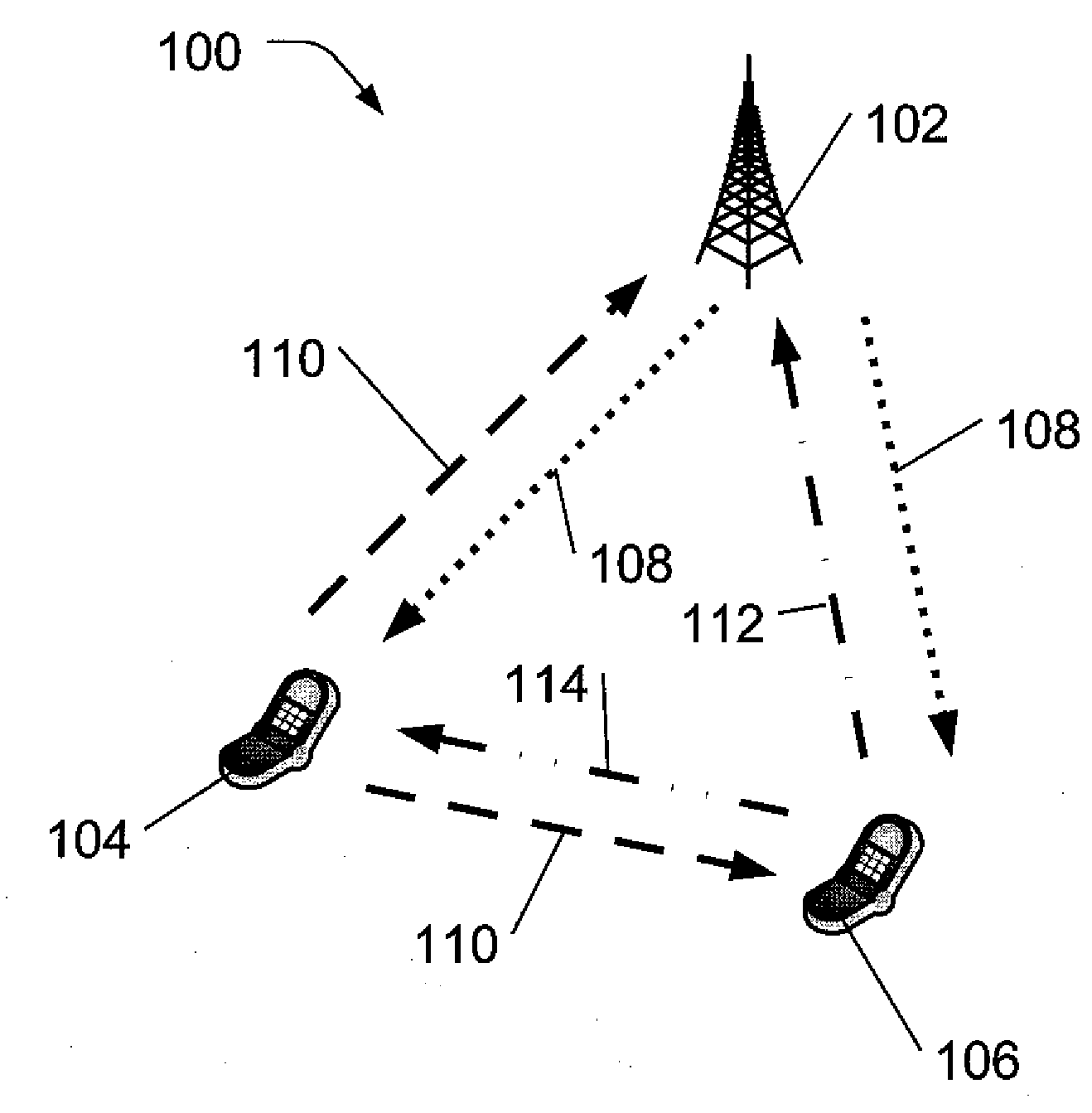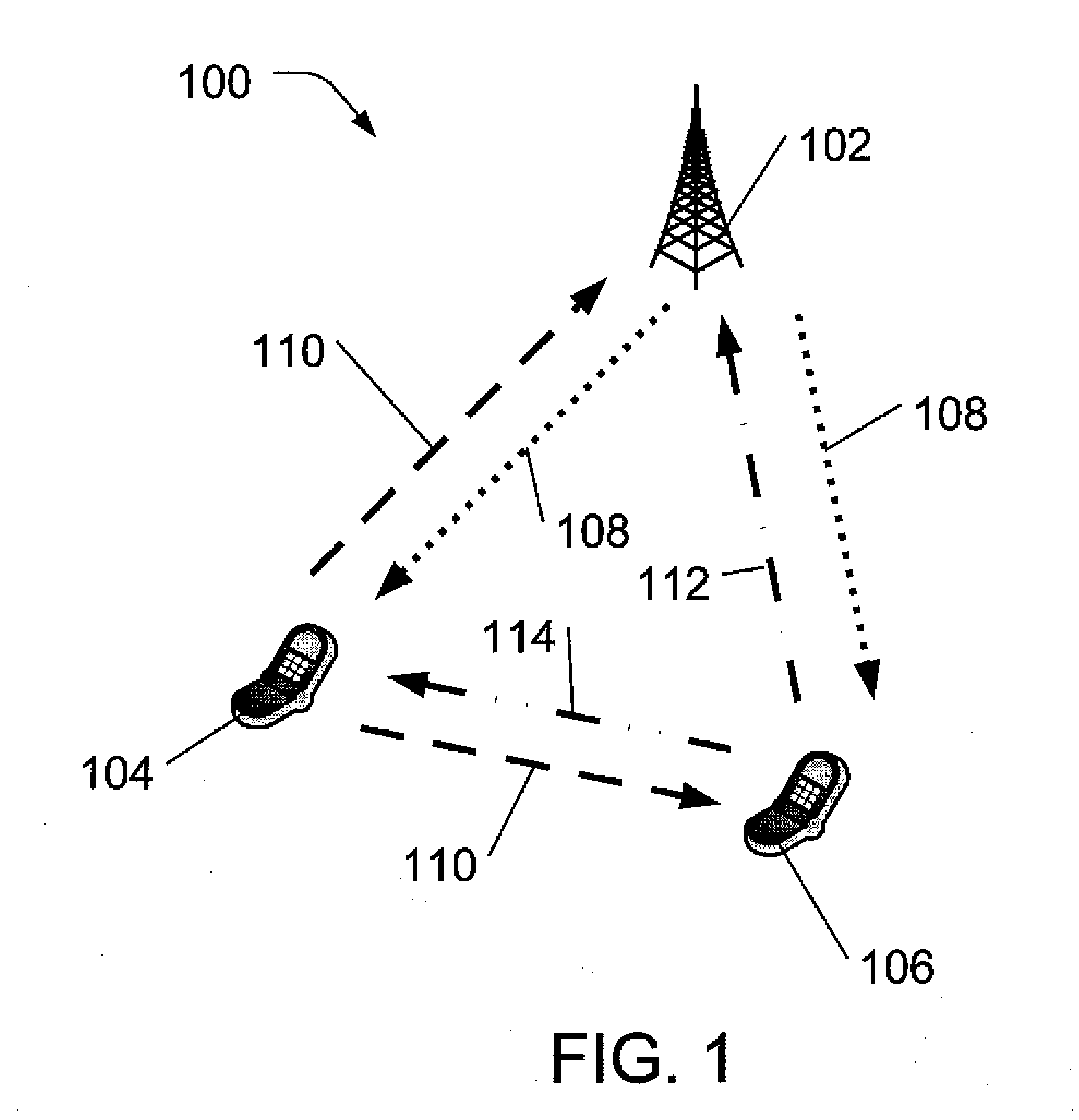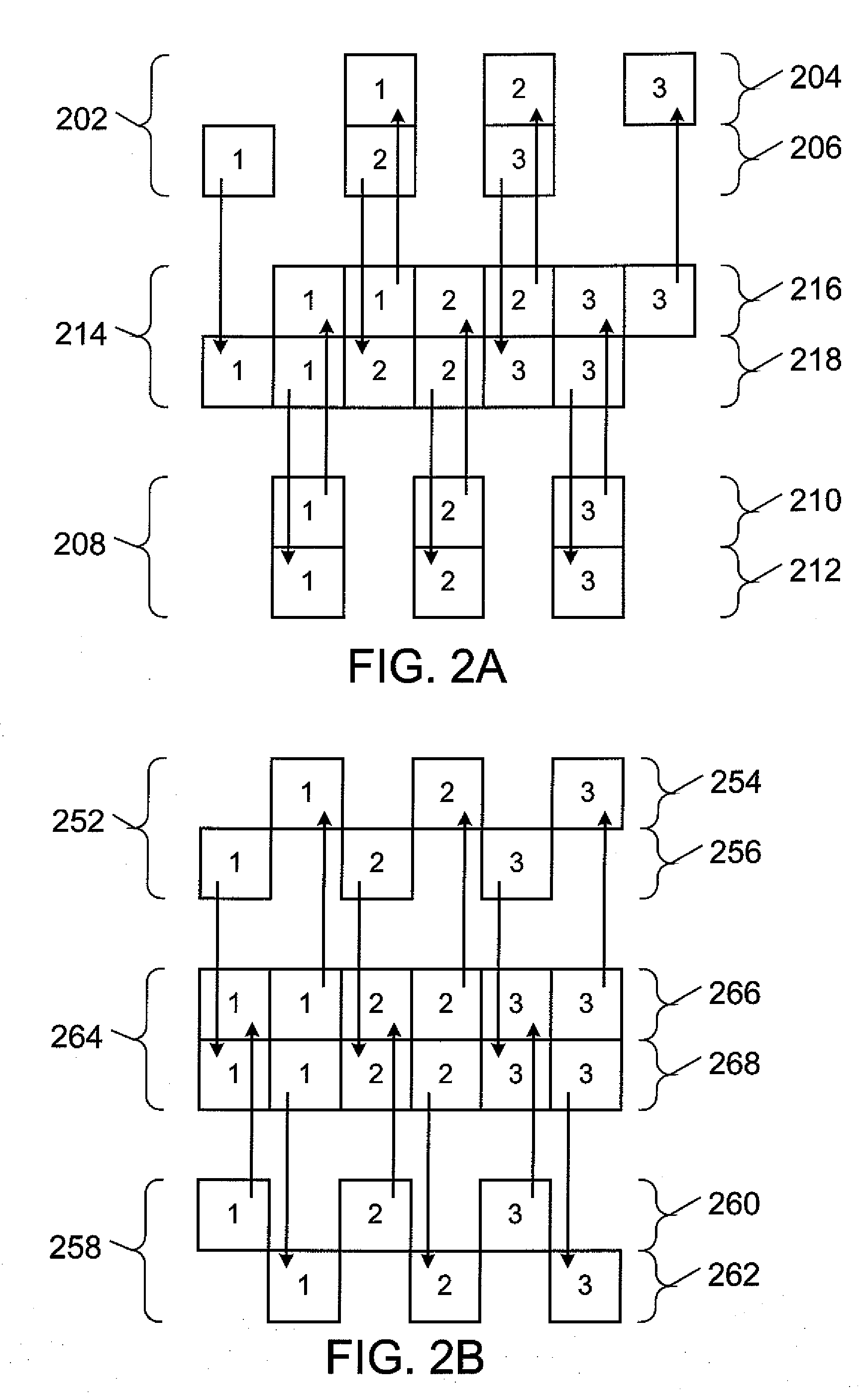System and method for optimizing network wireless communication resources
a network wireless communication and resource optimization technology, applied in data switching networks, frequency-division multiplexes, instruments, etc., can solve problems such as reducing the signal quality of users' base stations or cells, reducing the transmission power required for error-free communication, and reducing the signal quality of adjacent coverage areas or cells
- Summary
- Abstract
- Description
- Claims
- Application Information
AI Technical Summary
Benefits of technology
Problems solved by technology
Method used
Image
Examples
Embodiment Construction
[0023]In the past, relay stations in multi-hop networks typically had fixed locations and relatively constant coverage areas. However, dynamic relay stations may soon be added to many mobile communication networks. Generally, dynamic relay stations are stations that may change their relay coverage area and / or signal dynamically, including, for example, changing their location, reconfiguring their antennae, or adjusting output power. Although such dynamic relay stations offer the promise of being able to dynamically reconfigure a wireless communication network to improve and adapt network performance to changing needs, they may also lead to added complexity, since user equipment and base stations will no longer be able to rely on a relatively stable wireless network configuration and indeed may be dynamic relay stations themselves. In various embodiments, dynamic relay stations may dynamically change, for example, because of base station initiated commands, other dynamic relay initia...
PUM
 Login to View More
Login to View More Abstract
Description
Claims
Application Information
 Login to View More
Login to View More - R&D
- Intellectual Property
- Life Sciences
- Materials
- Tech Scout
- Unparalleled Data Quality
- Higher Quality Content
- 60% Fewer Hallucinations
Browse by: Latest US Patents, China's latest patents, Technical Efficacy Thesaurus, Application Domain, Technology Topic, Popular Technical Reports.
© 2025 PatSnap. All rights reserved.Legal|Privacy policy|Modern Slavery Act Transparency Statement|Sitemap|About US| Contact US: help@patsnap.com



